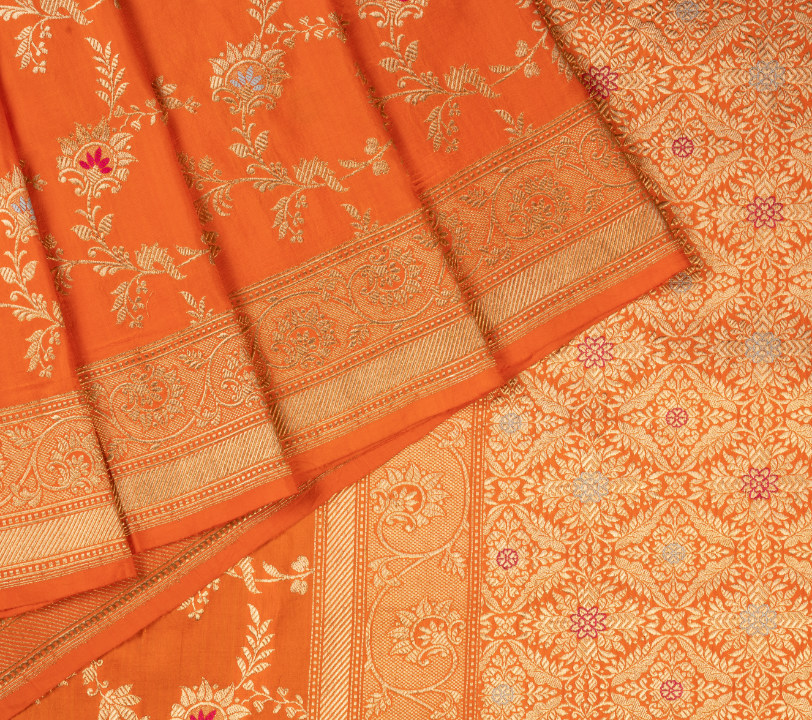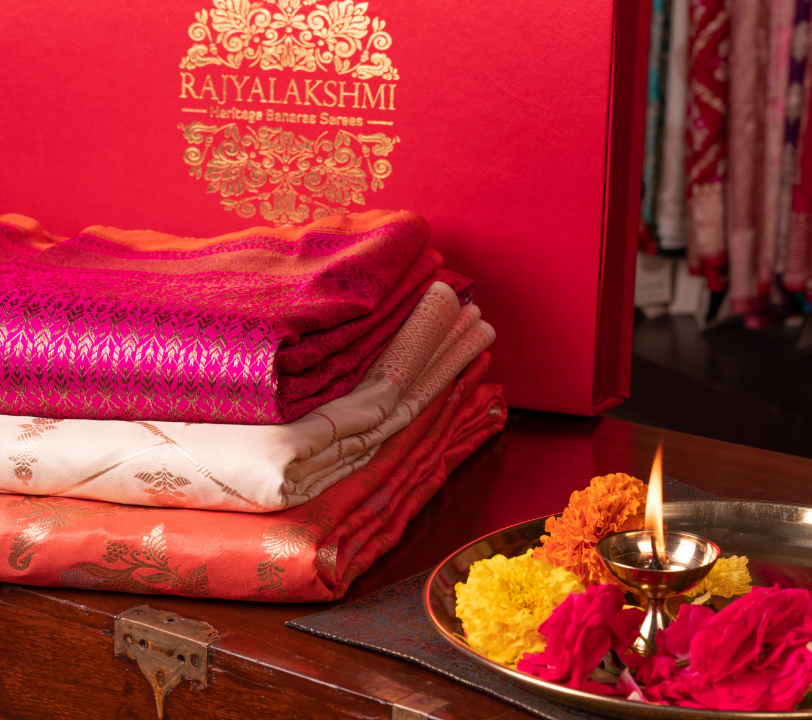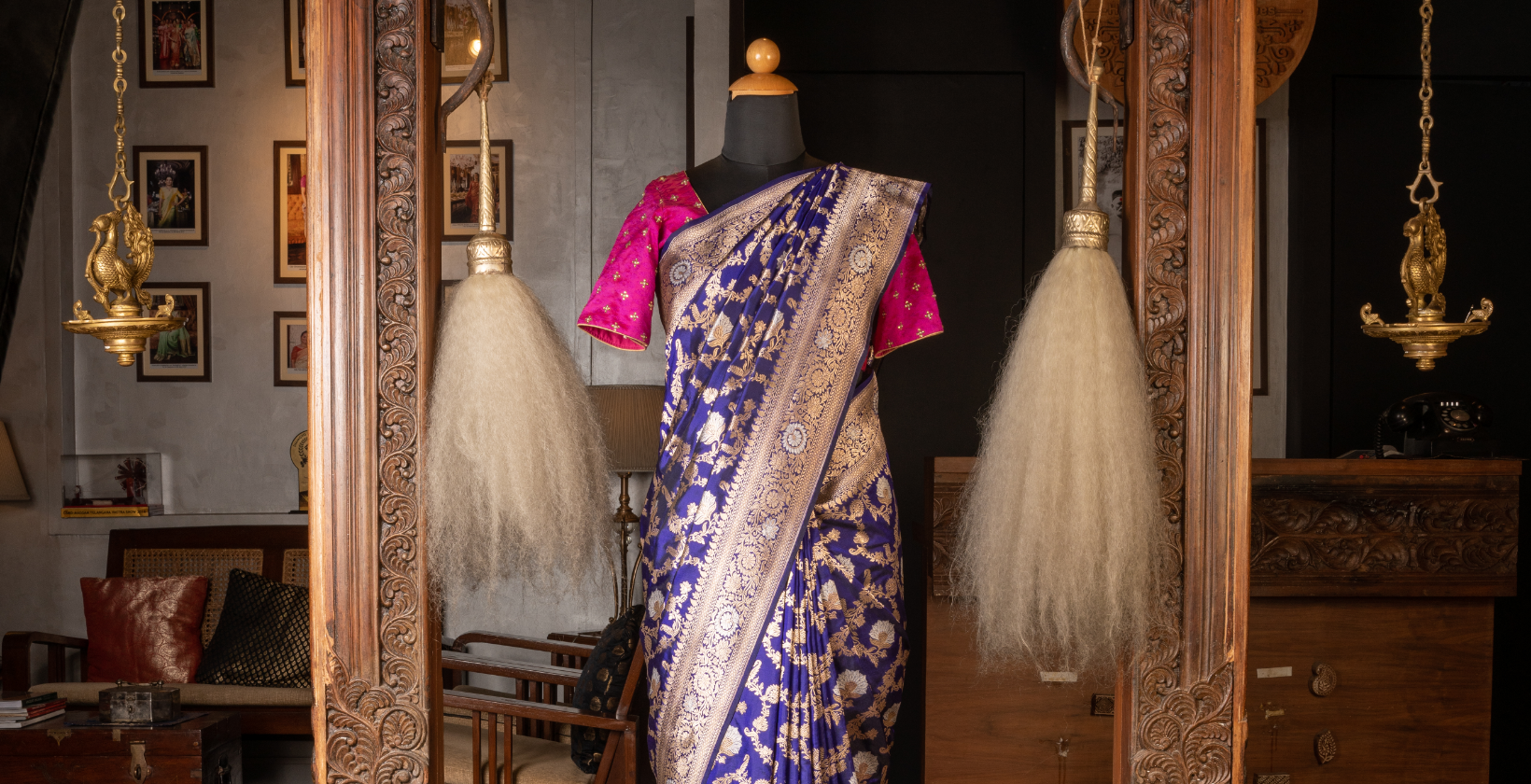
Exploring Banaras and the beauty the wonderful city has to offer is a delight at every step. It is the holiest, pristine and one of the most enticing destinations in the whole world. It is famous for being Lord Shiva’s home, its ghats and obviously Mother Ganges. The real feeling of Banaras can be experienced only by wandering on the captivating streets of the holy city.
The sarees, famously known as Banarasi Sarees, that come out Banaras are famous all across the world. For all great things alike, the Banarasi Sarees have rightfully earned their eminence. They are some of the finest silk sarees one could purchase with any amount of money. Their design is culturally inspired and the centuries old technique of weaving is irreplaceable. To have a better idea of what we are talking about, here are some images to show the elegance of a Banarasi Saree.
The sheer elegance of Banarasi saree is the result of hours of hard work by artisans that have learnt the skill of weaving throughout their lifetime. In essence, the basic difference between handloom and powerloom is based upon the type of loom used in the weaving process.
The looms that are operated by hand without the aid of any electric power are called the handlooms. It is a loom that uses the mechanical energy of the weaver to weave cloth. The powerlooms follow an entirely different principle and are not operated by mechanical power whatsoever. Instead of raw, manual power, electric power is used to weave cloth.
How do I identify handloomed fabric from power loomed fabric?
- Handloomed sarees are softer than power loomed sarees. Closely observe the saree or image to notice the difference in texture.
- Powerloom sarees cannot match the detailing and patterns like handloom sarees. Handloom sarees are usually adorned in designs that are inspired from Mughals and feature designs like amru, ambi, domak, etc. A powerloom cannot replicate such details.
- An average handloom saree takes 15 days to a month to complete.
- Your handloom saree will recover quicker from wrinkles and creases. This is due to the fact that wefts are woven unevenly in a handloom saree.
- On close observation, you might find one or two balls or pills formed on a saree that is power loomed. The speed of power looming causes abrasion and sometimes, weaker fibers break to form pills on the surface of the fabric. This won’t be the case with handloomed sarees.

Apart from these differences, the greatest certitude is the arduous work that goes into weaving a Banarasi silk saree to produce what is much better than a machine. Each saree is a unique testament to the weaver himself/herself and a skill that is centuries old. It is a level of intricacy, heritage and culture that is unmatched by any modern technology.
If this guide helps you to understand the differences between handloom and powerloom sarees, join us in celebrating heritage of Banaras, its artisans and most importantly a skill that has surpassed the test of time and tide. Visit https://rajyalakshmi.co.in/.




